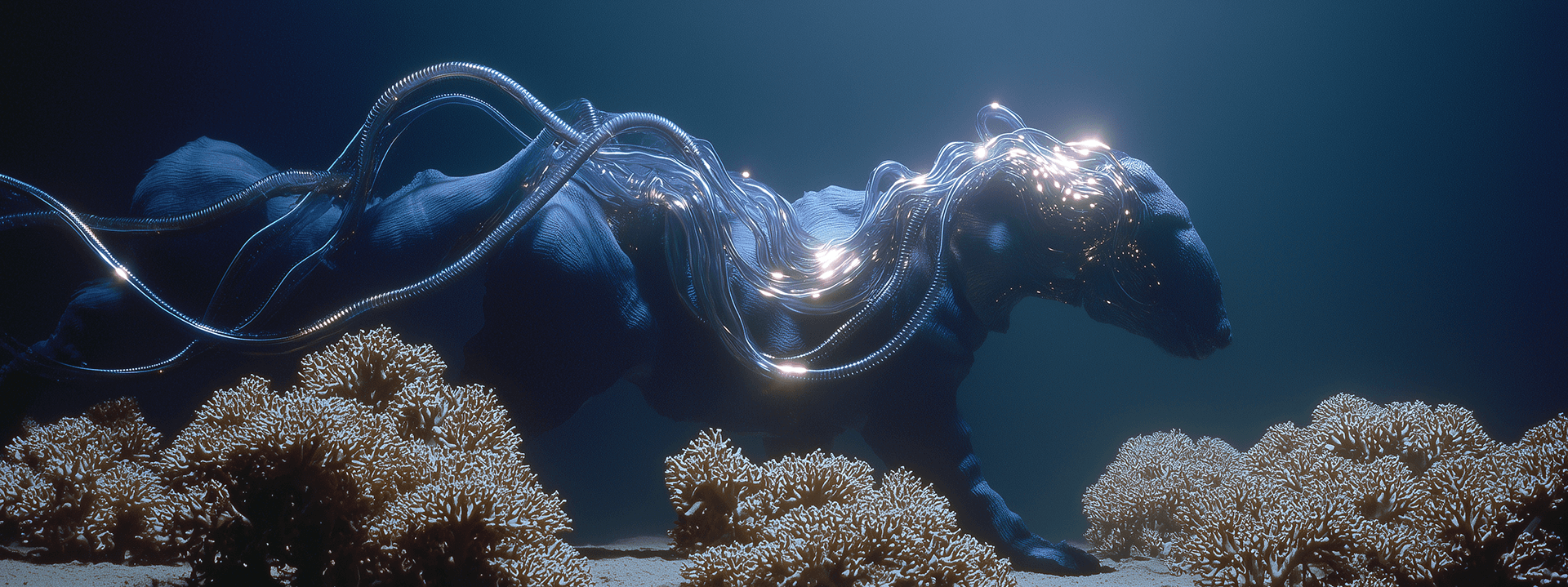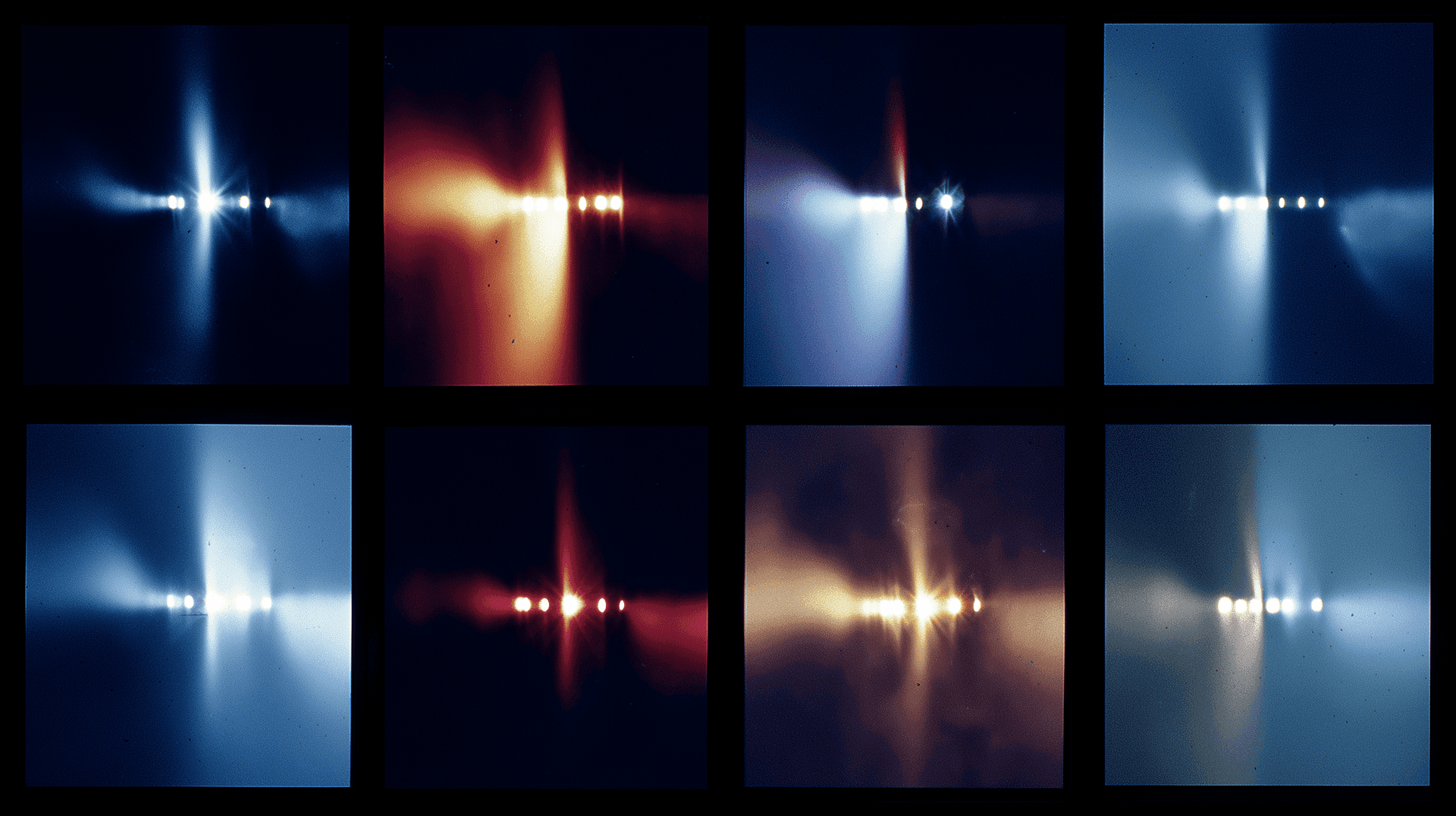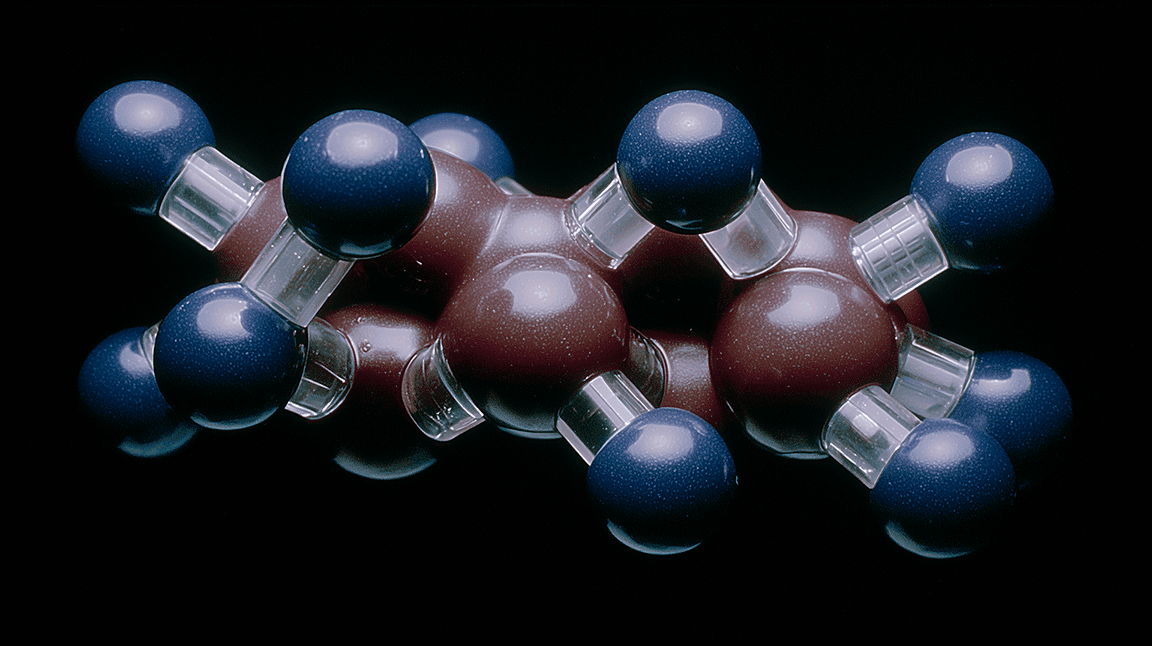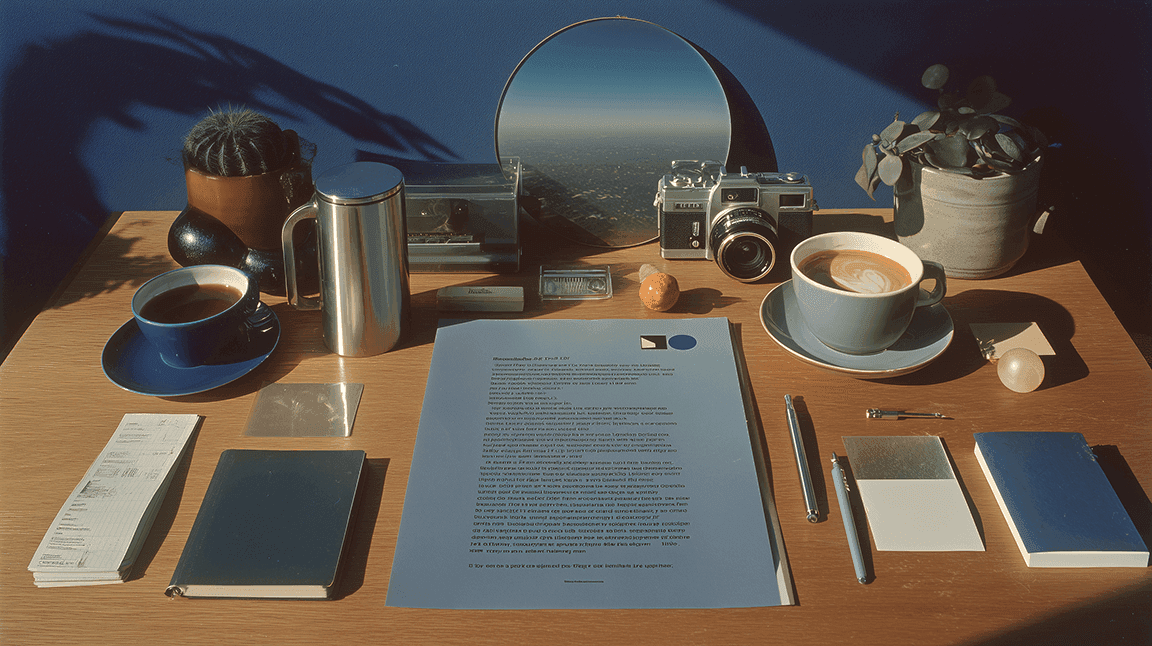
The AI as Alien Muse: Beyond Human-Centric Creativity
A practical case for treating AI as an alien collaborator, with tactics, pipelines, and studio habits that turn nonhuman signals into human craft.
Stop asking machines to imitate us.
Ask them to show us what we cannot see on our own.
Why otherness matters
We usually ask machines to imitate us. We fine tune models on our art, our voices, our habits, then judge their output by how closely it maps to a human example. That is a narrow goal. The more interesting question is what happens when we stop treating AI as a student of human taste and start treating it as an alien collaborator. Not a mirror, a muse.
Humans are pattern spotters, but our brains evolved on the savanna, not inside a radio telescope or a proteomics lab. We struggle to see structure in places where the data is too vast or the patterns move on timescales that are hard to hold in working memory. Models excel at that scale. When they scan protein families, satellite feeds, stock ticks, and mycelial growth logs at once, they surface curves and crossings our minds will never find on their own. That strangeness is not a bug. It is the point.

What counts as creative
Creativity is often defined as producing something that is both novel and appropriate. That sounds tidy until you try to measure it. Researchers do not agree on universal tests for creative systems, and most evaluations end up narrow to a domain. That uncertainty is useful for us, because it frees the conversation from a single scoreboard and lets us ask a practical question instead: does the system help us reach ideas we could not reach before, and can we verify that result in context?
“Creative enough” is not a trophy.
It is the moment a system helps a human cross an otherwise closed gap.
The argument for the alien muse
There are two paths to new ideas. One is by remixing known pieces in fresh ways. The other is by expanding the space you search in. Human training favors the first path, because we learn inside cultures and schools. Model training can favor the second. When the input space includes signals that humans do not experience directly, the outputs will predictably feel foreign. That is exactly what we want. The alienness widens the search.
A classic example sits outside art. When AlphaGo played Lee Sedol, it made moves that top players called beautiful and inhuman. The shock was not that a computer won. The shock was that it introduced lines of play that experts then adopted, which improved the human game. The system was not mimicking, it was exploring, and that exploration changed the field.
From imitation to interpretation
If we accept the muse frame, the role of the human shifts. We stop asking for a perfect copy and start acting like interpreters and translators. The job is to render outputs that arrive from a non human perspective into forms that land for human senses. Think of a composer who sonifies earthquake data, or a designer who turns bridge sampling between distant concepts into a chair. The source is extra human. The craft is human. The value sits in the translation.
The practice: Xeno Expressionism. The art is the translation layer.
Xeno expressionism in practice
Here are five practical channels where the alien muse creates lift right now.
-
Scientific textures for visual design.
Feed in structured data from fields with strong latent geometry. Protein contact maps, coral reef lidar, seismograph stacks, or power grid oscillations. Use the model as a microscope for patterns your eye cannot hold. Then make the translation step. Pull out printable tilings, riggable meshes, or parametric wallpapers. A studio can ship a family of brand assets that would not exist if the source had been a mood board of other logos. -
Sound from silent systems.
Train a small model on numerical phenomena, then resample it to audio space. You will hear flavor in an algorithm long before you see it on a chart. Traders sometimes talk about feeling a tape. This is the literal version. You can do it with glacier melt rates, soil moisture time series, or the queue depth of a server cluster. The human comes back in to pick the passages that feel like a theme, not a drone. -
Movement from growth rules.
Many living systems share a branching logic. If you expose a planner to root networks, river deltas, and ant foraging paths, and then constrain it with film blocking or level design, you get staging that feels alive without copying any one species. The model discovers camera itineraries you would not sketch. You keep the ones that make the story read clean. -
Materials from error fields.
Models trained on manufacturing telemetry carry a memory of flaws. You can harvest that to design finishes and weaves that look broken in controlled ways. Think of a ceramic glaze that learns from a thermal stress dataset, or denim that borrows its fade pattern from wind shear logs. The alien muse here is the physics of failure made visible. -
Idea scaffolds from graph bridges.
When you build graphs of concepts and then sample random bridges through distant nodes, you get analogies the brain rarely suggests on its own. A path that jumps from tide pools to packet routing to street food can unlock an unorthodox service flow. The muse is not a sentence completion trick. It is the topology of knowledge itself.

Designing for the alien
If you are building creative tools, you can make otherness a feature. The UI should let people steer what kind of non-human source the system will draw from. Add clear toggles for sensor feeds, scientific corpora, and bridge sampling. Provide a slider that shifts between copying the training distribution and hybriding from outside data. Most teams already ship novelty controls. This is different. It is a control for provenance, not randomness. It answers the question: how alien do you want to go?
You also need an interpreter lane. Once the system proposes something that feels unfamiliar, give the user fast ways to translate. That can be a bank of renderers that convert raw structure into a medium, or it can be prompt helpers that turn patterns into prose. The output needs a path to a storyboard, a spec, a score, or a mockup without making the user wrestle with bare arrays.
A simple pipeline
One working pattern looks like this. First, preprocess the user brief to extract key concepts and constraints. Second, enrich those with graph analytics or bridge sampling to add serendipity. Third, seed the model with cross domain signals that have useful structure. Fourth, generate candidates in two lanes, one familiar and one alien. Fifth, run a light evaluation pass that checks fit to constraints. Finally, present results in a split view, with quick binds to translate the unfamiliar into a chosen medium. This mirrors how a modern creativity engine can coordinate preprocessing, graph enrichment, multi pass prompting, and post processing into a publishable draft.
How to prompt for otherness
You can nudge models into alien space without needing a special build. Three tactics help.
Bias the corpus. Ask the system to draw from non-human datasets where possible, and name the domains. It will not truly access those corpora unless the model was exposed to them, but even the constraint will pull the conversation away from safe tropes.
Frame the task as a translation. Tell the model it is seeing structures humans cannot see directly, and that its job is to produce raw patterns while your job is to render. This change in social contract reduces the pressure to output finished assets and opens room for strangeness.
Use bridge prompts. Instead of asking for one idea, ask for a path of three or four concepts that must be linked and a sketch of how they fit. Treat the path like a scaffold, not a headline. The language model cannot run real graph search, but the structure primes it to make longer jumps.
Evaluating alien outputs
If you only judge the results by how human they feel, you will miss the point. Shift the rubric. Ask three questions. First, does it unlock an approach your team would not have proposed alone. Second, can you map it back to the brief with a clear line. Third, can you reproduce the move on a new problem. That is closer to a creativity test for systems that expands beyond simple mimicry and avoids the trap of domain specific scoring.
Case study: the Move 37 mindset
When a model surprises you with a line of play that looks wrong but keeps winning, you are looking at the useful edge of otherness. The goal is not to copy the move literally in your field. The goal is to notice what kind of constraint the system ignored, and why that led to a better line. In Go, professionals updated their priors on supposedly weak shapes because the model proved that long term influence could outweigh local neatness. In product design, that insight might be a willingness to ship an odd scaffold now because it unlocks compounding options later. The mechanism is the same: unusual intermediate states that prove out in the endgame.
Ethics and authorship
The alien muse does not exempt us from normal duties. If you are drawing on scientific corpora or sensor feeds, you still need consent, provenance, and a plan for attribution. You also need to be clear with clients about what parts of the work came from a system and what parts came from your hand. The source can be extra human. The responsibility stays human.
There is also a trap to avoid. It is easy to dress up a normal remix as alien by sprinkling in a buzzword dataset. If your result would look the same without the outside signal, you did not collaborate with an other. You copied a vibe. Hold the work to a higher bar. Make sure the unfamiliar source is doing actual problem solving, not marketing.
The studio pattern
Teams that get consistent value from the alien muse tend to run a repeatable weekly ritual. On Mondays, they pick two briefs. On Tuesdays, they feed each brief into three alien channels and collect raw structures. On Wednesdays, they translate those into human formats and annotate what looks promising and why. On Thursdays, they test one or two candidates in a tiny user study. On Fridays, they publish a one page memo of what ruled in or out, and what should go into the studio’s private recipe book. That is how you build a data moat of creative moves that compounds over time.

A note on taste
Otherness does not replace taste. It makes taste matter more. When execution gets cheap, selection is the skill. The alien muse will flood you with possibilities. Your job is to choose one that fits the story you are trying to tell and the constraints you cannot move. Think of it like surfing. The swell shows up because of distant weather you do not control. The ride is yours.
The Creativity+ engine behind Brain Garden was built with this collaboration in mind. It does light preprocessing, adds graph based hints, mines a seed corpus for distant sparks, and runs a second pass that riffs on promising drafts. We expose controls for speculation and randomness so teams can decide how wild to go, and we make it easy to translate raw patterns into usable artifacts. The goal is not to replace your sense of direction. It is to widen the horizon you can see from where you stand.
Final Notes
The future of creative work will not be humans versus machines. It will be humans with machines that see the world in ways we cannot. That is not a loss of soul. It is an expansion of sight. If you choose to work with an alien muse, you are not giving up authorship. You are choosing a harder, richer job. You become the interpreter who turns signals from the deep into forms we can feel. That has always been the work of art.